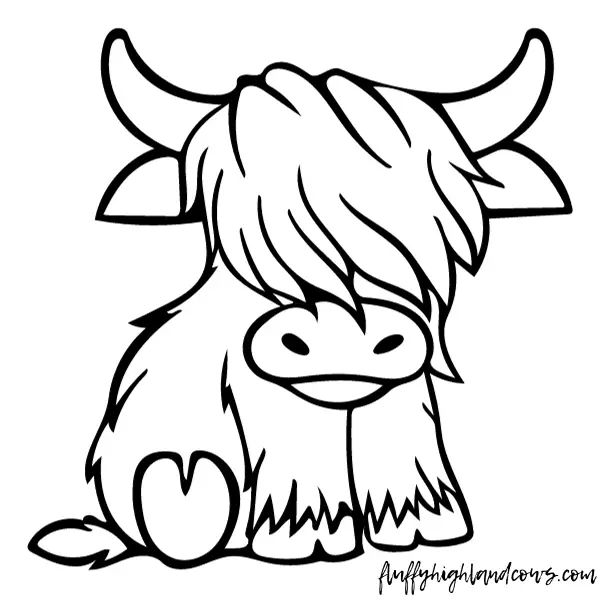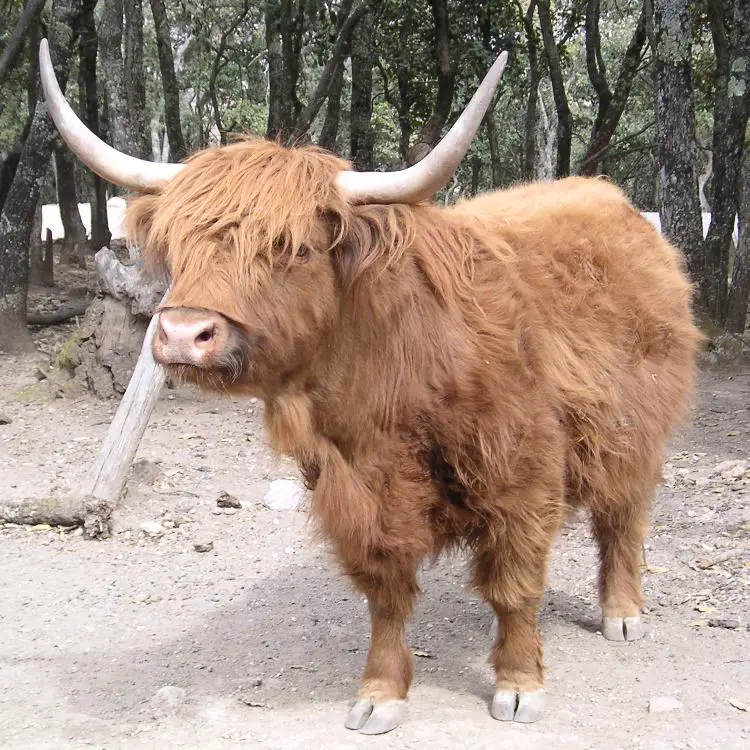Resurgence in Popularity: Highland Cattle in America
Highland cattle, an ancient breed with roots stretching back to the 6th century, are experiencing a remarkable resurgence in popularity among modern farmers and enthusiasts, marking a significant shift in the agricultural landscape as we enter 2024.
Originating from the rugged Highlands of Scotland, these cattle are known for their distinctive shaggy coats and majestic horns. Once on the brink of extinction, Highland cattle have made a triumphant comeback, officially “graduating” off the Livestock Conservancy’s 2019 Conservation Priority List.
This achievement is a testament to global efforts to preserve this heritage breed, with their numbers now exceeding 25,000 worldwide.
The Rising Popularity of Highland Cattle
The appeal of Highland cattle extends far beyond their striking appearance. Owners of small farms, such as Fran Wilkinson and Clarke Childs at Highland Bullrush Acres in Manitoba, have embraced the breed for its hardiness, cost-effectiveness, and gentle temperament.
Wilkinson and Childs’ farm, nestled in the Interlake region of Manitoba, showcases the breed’s adaptability. Despite the challenging terrain, their herd of about 50 Highland cows thrives, requiring less feed than larger breeds like Angus.
Highland cattle are a hit on social media platforms like TikTok, driving demand and market value due to their adaptability and unique appearance.
“People love them. They just love them. They love the calves especially,” Wilkinson said. “There’s a lot of people wanting them as pets, you know, because they are beautiful and cute.”
However, it’s not just their looks that attracted the couple to the Highland cows. The breed, known for its massive horns and thick, shaggy coats, is well-suited to the harsh Manitoba winters.
Highland Bullrush Acres is situated on rough Interlake land, typically challenging for cattle pasture, but the Highland cows thrive in these conditions. Smaller than the typical Angus, they require less hay, making them a more cost-effective option for farmers.
Josh Krenz, president of the American Highland Cattle Association and a farmer at Windland Flats in Princeton, MN, sheds light on why this breed is gaining traction. Krenz, who grew up on a dairy farm in Wisconsin, highlights the main differences between Highland cattle and other breeds. “They are traditionally known for being docile, and they have high quality meat that is low in fat and cholesterol,” Krenz said.
But the appeal of Highland cattle extends beyond their temperament and meat quality. They are exceptional mothers with a strong instinct, even in first-calf heifers, and are known for easy calving. The Highland Performance Program reveals that the average birth weight of calves is between 56 to 70 pounds, with a remarkable 97% of calvings being unassisted – a significant advantage for pasture births or when the owner is not present.
Addressing misconceptions about their horns, Krenz notes that while sometimes used for protection, Highland cattle are predominantly docile, with a majority scoring as “exceptionally calm” or “calm” in handling tests. However, their horns and thick double-layered hair, an adaptation to the harsh Scottish climate, do require mindful handling.
This double coat not only helped them survive in the Scottish Highlands but also enables them to endure sub-zero winters in northern states. In summer, they need shade and plenty of water. The thick hair also contributes to the leanness of their meat, confirmed by a University of Missouri study in collaboration with the AHCA and the Highland Cattle Foundation.
Highland cattle also boast impressive longevity. Unlike other European beef breeds typically cycled out at 6 or 7 years old, Highlands continue to give birth well into their later years. Krenz recalls the oldest cow calving on his farm was 20 years old.
Highland cattle’s rise in popularity started about a decade ago as they gained fame in art and social media. The Covid-19 pandemic further amplified this demand, as concerns over food supply chains prompted people with small acreages to explore raising their own meat. The breed’s adaptability to various farming practices, ranging from grazing on natural diets to cross-breeding for quicker finishing, enhances their appeal.
A Sustainable Choice for Modern Farming
The resurgence of Highland cattle aligns with a growing trend towards sustainable and self-sufficient farming practices. Matthew Atkinson, President of Manitoba Beef Producers, sees the breed’s potential in enhancing the genetic diversity of commercial cattle herds.
The Canadian Highland Cattle Society, led by Paul Thibodeau, has also observed this trend. With 339 registered Highland cattle farms in Canada, including 17 in Manitoba, the society has recorded steady growth, particularly in the last five years.
Thibodeau highlights that while the increase in Highland cattle farms is notable, these tend to be smaller homesteads, reflecting a broader movement towards sustainable and self-sufficient living.
“We have been gradually growing, but the last five years we have been doing a lot better,” said Paul Thibodeau, president of the society based in Quebec. “Basically where people are coming back to growing their own food, making their own meat.”
Looking Ahead
As we move into 2024, Highland cattle continue to gain momentum, not just as a novelty but as a viable option for small-scale and commercial farming. Their ability to thrive in challenging environments, coupled with their low maintenance and gentle nature, makes them an increasingly popular choice for farmers and hobbyists alike.
The story of Highland cattle is one of resilience and adaptability, serving as a beacon for heritage breed conservation and sustainable agricultural practices. As their popularity grows, so does their contribution to the diversity and resilience of our global agricultural systems.

